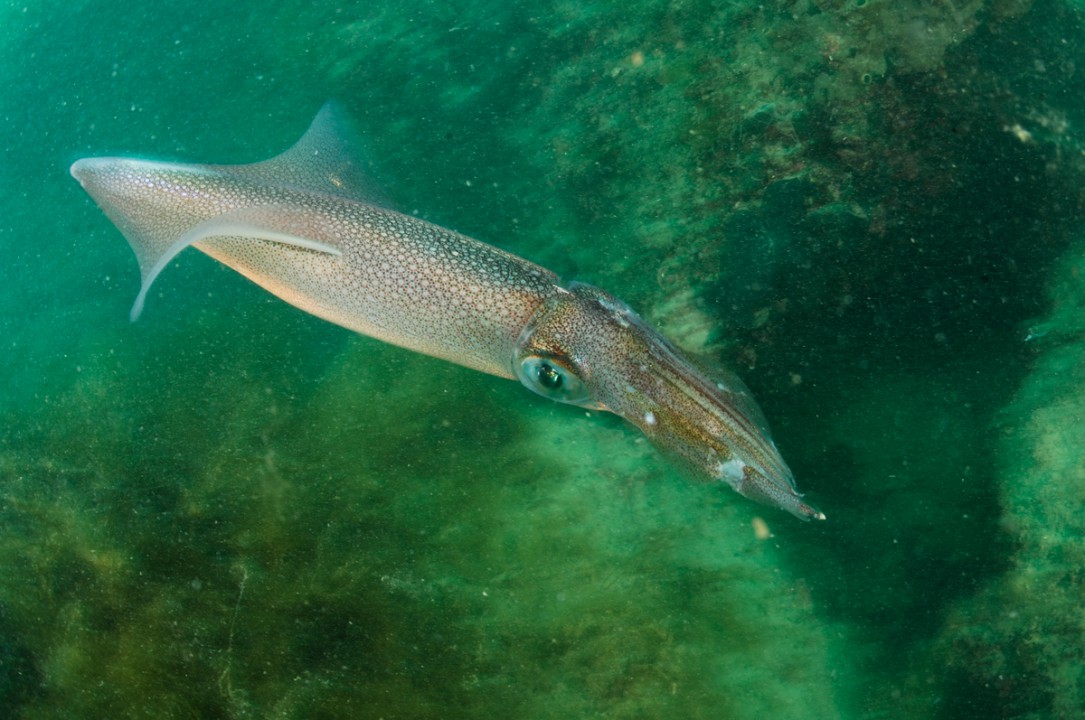Loligo vulgaris
E’ un mollusco cefalopode dal corpo allungato a forma conica; sui margini laterali del dorso sono presenti due pinne che raggiungono l’estremità (posteriore) della sacca e nell’insieme formano un rombo. Il corpo è molle anche se all’interno è presente una sottile conchiglia detta gladio. Il capo sporge dal mantello e gli occhi sono in posizione laterale; attorno alla bocca si trovano 10 tentacoli di cui 2 più lunghi che si allargano all’estremità dove sono presenti parecchie ventose, poste in quattro serie. I due tentacoli più lunghi servono alla cattura delle prede, rappresentate da pesci, crostacei o altri molluschi. Il colore dell’animale è rosa-viola con punti più scuri bruno-rossi. E’ molto diffuso nell’Alto Adriatico ed è una specie pelagica anche se spesso si trova in acque costiere dove si avvicina in occasione della riproduzione, che culmina con una deposizione delle uova in ammassi gelatinosi nastriformi fissati a substrati sommersi. Viene pescato tutto l’anno, con le saccaleve assieme a sardine e acciughe, ma soprattutto con le reti volanti, le cocce e le reti da posta, oltre che in modo amatoriale. Può aggregarsi in banchi numerosi e compiere migrazioni verso la costa, nel periodo riproduttivo o verso la superficie durante le ore notturne. Ad un’osservazione superficiale può essere confuso con il totano, dal quale però si riconosce facilmente grazie alle pinne che nel calamaro coprono metà della lunghezza totale del mantello, mentre nel totano si trovano inserite solo all’estremità terminale. Le sue carni sono apprezzate maggiormente rispetto a quelle del totano. Taglia minima 7 cm.

